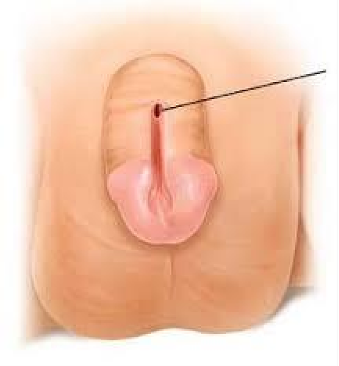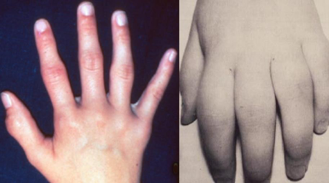Juvenile arthritis should be suspected in a child who exhibits
frequent fractures.
joint swelling and pain lasting longer than 6 weeks.
lurching and abnormal gait with limited abduction.
increased joint mobility.
The Correct Answer is B
Juvenile arthritis should be suspected in a child who exhibits joint swelling and pain lasting
longer than 6 weeks. Juvenile arthritis refers to a group of chronic inflammatory conditions
that affect the joints in children and adolescents. Persistent joint swelling and pain are
common symptoms of juvenile arthritis and are often accompanied by other signs such as
morning stiffness, limited range of motion, and joint warmth.
, frequent fractures in (option A) is not correct because it, is not typically associated with
juvenile arthritis. Fractures are more commonly associated with conditions affecting bone
strength, such as osteoporosis or certain genetic disorders.
lurching and abnormal gait with limited abduction in (option A) is not correct because it,
may be seen in certain musculoskeletal conditions or hip joint abnormalities, but it is not
specific to juvenile arthritis.
increased joint mobility in (option D) is incorrect because it, is not typically associated with
juvenile arthritis. In fact, joint stiffness and limited range of motion are more characteristic of
this condition.
Nursing Test Bank
Naxlex Comprehensive Predictor Exams
Related Questions
Correct Answer is C
Explanation
Epispadias is a congenital condition in which the urethral opening is not located at the tip of the penis as is typical but rather along the ventral surface (underside) of the penis. In severe cases, the urethral opening may extend all the way to the bladder.
absence of a urethral opening in (option A) is incorrect because it, describes a condition called urethral agenesis or aplasia, where the urethral opening is completely absent. This is a different condition from epispadias.
a penis shorter than usual for age, in (option B) is incorrect because it is not specific to epispadias and could be caused by various factors unrelated to the condition.
a urethral opening along the dorsal surface (topside) of the penis in (option D) is incorrect because it, is a condition called hypospadias. Hypospadias is another congenital anomaly where the urethral opening is located on the underside or along the ventral surface of the penis, but it is not synonymous with epispadias.
Therefore, epispadias specifically refers to the urethral opening being situated along the ventral surface of the penis.

Correct Answer is B
Explanation
During painful episodes of juvenile arthritis, a plan of care should include proper positioning of the affected joints to prevent musculoskeletal complications. Proper positioning helps to alleviate pain, reduce inflammation, and minimize stress on the affected joints. It also promotes joint stability and prevents contractures or deformities that can occur due to prolonged immobility.
a weight-control diet to decrease stress on the joints in (option A) is incorrect because it, may be a consideration in managing overall joint health and reducing excessive strain on the joints. However, it is not the primary nursing intervention during painful episodes of juvenile arthritis.
high-resistance exercises to maintain muscular tone in the affected joints in (option C) is incorrect because it, may not be appropriate during painful episodes of juvenile arthritis. High-resistance exercises can potentially exacerbate pain and inflammation. Exercise should be tailored to the individual's condition and guided by healthcare professionals.
complete bed rest to decrease stress to joints in (option D) is incorrect because it, is not recommended as a nursing intervention for painful episodes of juvenile arthritis. Prolonged bed rest can lead to muscle weakness, joint stiffness, and functional decline. Instead, maintaining mobility and appropriate activity levels within the child's pain tolerance and capabilities is generally preferred.

Whether you are a student looking to ace your exams or a practicing nurse seeking to enhance your expertise , our nursing education contents will empower you with the confidence and competence to make a difference in the lives of patients and become a respected leader in the healthcare field.
Visit Naxlex, invest in your future and unlock endless possibilities with our unparalleled nursing education contents today
Report Wrong Answer on the Current Question
Do you disagree with the answer? If yes, what is your expected answer? Explain.
Kindly be descriptive with the issue you are facing.

